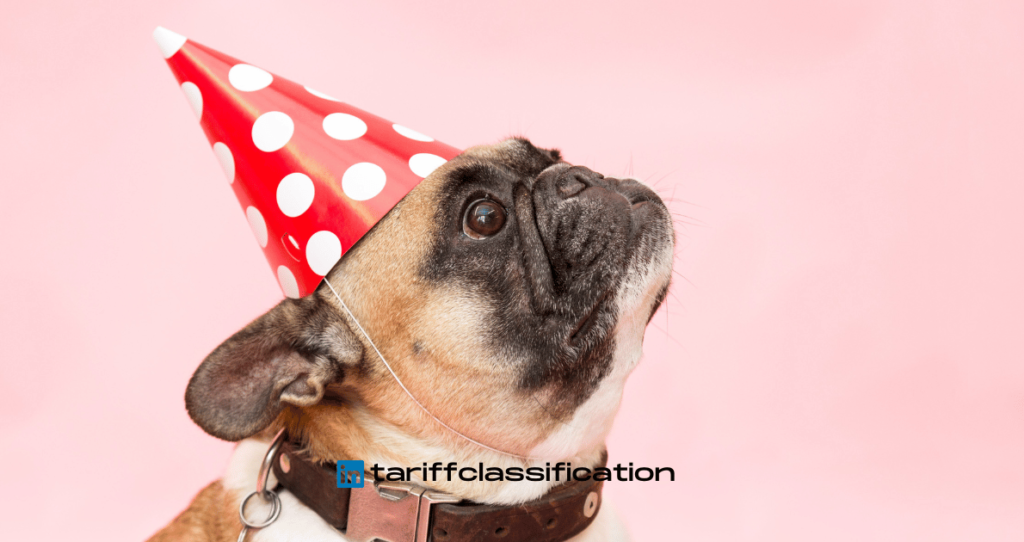Novelty hats are often made of novelty fabrics, such as felt, velvet, or fur, and may feature unusual decorations, such as plastic animals, pompoms, or fabric flowers. They may also feature humorous slogans or humorous illustrations. They can be made in a variety of shapes, such as top hats, cowboy hats, and sun hats, and in a variety of colors, sizes, and styles. Novelty hats can be purchased at a variety of stores, online, or made at home. They are a great way to add a bit of fun and humor to any outfit or occasion.
Tariff Classification
Textile Novelty Hats can be both festive articles and hats and headgear. Depending on the style, they can be classified under heading 6505, which includes hats and headgear, or heading 9505, which includes festive articles. Generally, more traditional styles of Novelty Hats are classified under 6505, while more unique and festive styles are classified under 9505. Both types of Novelty Hats are available in a wide variety of fabrics and designs, making them a popular choice for all types of occasions.
The Commodity
Festive articles are items that are used in celebration of and for entertainment on a holiday or items that are a symbol of, associated with, or used on a particular recognized holiday. In this case, there was no evidence that the Novelty Hats were used in celebration of or for entertainment on a holiday or that any of them are a symbol of, associated with or used on a particular recognized holiday. As such, these hats were not classifiable as festive articles and were not subject to the Midwest decision.
Classification Analysis
Novelty Hats are considered to be articles of fancy dress and could be classified under heading 9505 or heading 6505. These hats have been found to be both amusing and highly functional, making it difficult to determine whether the amusement is the primary purpose or if the utilitarian function is secondary. In this case, since the hats can be worn as headgear they are more likely to be considered functional and the amusement is likely incidental. While Chapter 95 Note 1 (e) prohibits articles of fancy dress in Chapters 61 and 62, this prohibition does not extend to Chapter 65.
The Explanatory Notes to Chapter 65 emphasize the fact that Chapter 65 covers all kinds of hats and headgear, regardless of the material they are made of or the purpose they serve. This includes hats and headgear intended for daily wear, theatrical use, disguise, protection, and more. The ENs also note that this chapter covers hat-shapes, hat-forms, hat bodies, and hoods. This means that Chapter 65 encompasses a wide variety of hats and headgear, and is a comprehensive guide for anyone wishing to learn more about hats and headgear.
Example
A sorcerer hat – A sorcerer’s hat is a tall, pointed hat typically made from felt or velvet and adorned with stars, moons, and other magical symbols. It is often associated with magicians and is part of their traditional costume. The hat is used for many purposes, such as aiding in the casting of spells, storing magical items, and providing a place for the sorcerer to rest their eyes during meditation. The hat is also used to add a magical flair to certain rituals, such as a witch’s initiation. It symbolizes the power of the magician and is an important part of their magical toolkit.
A “St. Patrick’s – The St. Patrick’s felt hat was a unique and fun accessory for any St. Patrick’s Day celebration. This oversized hat was in the style of the “cat in the hat,” but with a green brim and alternating pieces of white and green fabric with a green crown. It was a great way to show off your Irish pride during the holiday, while still looking stylish and fun. The hat was perfect for any festive occasion or just to wear around town. It was a great way to add some color to your wardrobe and the oversized shape made it even more fun and memorable.
An Elf Hat – An elf hat is a type of hat that is typically seen worn by elves in fantasy stories and films. They usually have a pointy shape to them and often come in various colors and patterns. They are usually made of felt or other fabric and sometimes have bells or other decorations attached to them. Elf hats are often seen as a whimsical and festive accessory, and can be worn to add a bit of fun to a costume or outfit.
Caps with Hair – Caps with hair have been a popular fashion statement for many years. In the 70s, caps with hair were very “groovy” and often featured peace signs. In the 80s, biker babe caps with long hair became popular, with styles ranging from blonde to blue. While these caps with hair may no longer be in fashion, they still evoke a nostalgic feeling of when they were all the rage. Many people still sport them to this day, from festivals to concerts, and even everyday life.
Footnote
The importer should be aware of the distinctions made in 6505 regarding materials such as cotton, wool, man-made fibers and other materials, as well as knit, crocheted, woven and non-woven construction. If the item is of man-made materials, the importer should be aware if it contains braid, and ascertain if the braid serves a useful purpose or affects the nature of the article or increases the salability of the article. If there are any doubts, the importer should contact Customs to ensure they are in compliance with the regulation.
